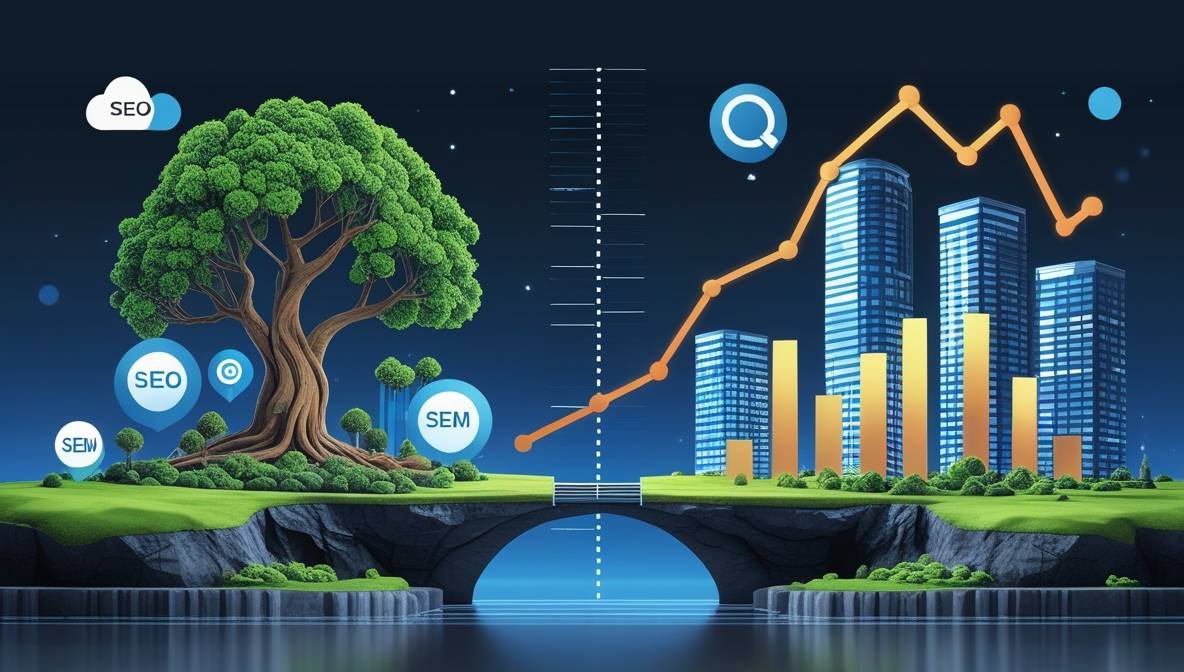Understanding the distinction between SEO (Search Engine Optimization) and SEM (Search Engine Marketing) is critical for any digital marketing strategy. While SEO focuses on organic search rankings through technical and content-driven tactics, SEM combines paid advertising with organic efforts to drive immediate and sustained results. This guide breaks down their differences, benefits, and how to integrate both for maximum impact.
What Is SEO?
SEO involves optimizing websites to rank higher in unpaid search results. It’s a long-term strategy that builds authority and relevance through:
- On-Page SEO:
- Keyword research and integration.
- Meta tags, headers, and high-quality content.
- Internal linking (e.g., Best SEO-Friendly CMS Platforms).
- Off-Page SEO:
- Backlink acquisition from reputable sites.
- Social signals (shares, mentions).
- Technical SEO:
- Mobile optimization (Mobile Optimization Guide).
- Site speed improvements.
- XML sitemaps and crawlability.
Tools like SmallSEOTools simplify tasks like keyword research and backlink analysis.
What Is SEM?
SEM uses paid strategies to achieve visibility, primarily through Pay-Per-Click (PPC) ads. Key components include:
- Google Ads & Bing Ads: Bid on keywords for instant ad placements.
- Ad Copy Optimization: Write compelling CTAs and use extensions.
- Audience Targeting: Demographics, location, and device-based targeting.
SEM delivers quick traffic but requires ongoing budget allocation.
SEO vs. SEM: Core Differences
| Factor | SEO | SEM |
|---|---|---|
| Cost | Lower long-term costs | Immediate, ongoing ad spend |
| Results Time | 6–12 months for full impact | Instant visibility |
| Sustainability | Long-lasting with consistent effort | Stops when budget ends |
| Focus | Organic rankings, authority | Paid ads, precise targeting |
When to Use Each:
- SEO: Ideal for sustainable growth (e.g., Local SEO Strategies).
- SEM: Best for product launches or time-sensitive campaigns.
Combining SEO and SEM for Maximum ROI
Integrating both strategies creates a synergistic effect:
- Dominating SERPs: Appear in both organic and paid results.
- Data Sharing: Use SEM keyword data to refine SEO content.
- Funnel Coverage:
- SEM captures top-of-funnel users.
- SEO nurtures mid-to-lower funnel intent.
For example, pairing voice search optimization (SEO) with targeted PPC ads (SEM) can cover diverse search behaviors.
Building a Balanced Strategy
- Budget Allocation:
- Allocate 60–70% to SEO for long-term growth.
- Reserve 30–40% for SEM campaigns.
- Tools & Analytics:
- Track SEO performance via Google Search Console.
- Monitor SEM metrics in Google Analytics.
- Continuous Optimization:
- A/B test ad copy and landing pages.
- Regularly update SEO content (Content Marketing Guide).
Future Trends to Watch
- AI-Driven SEO: Tools like SmallSEOTools use AI for predictive keyword analysis.
- Voice Search: Optimize for conversational queries.
- Mobile-First Indexing: Prioritize mobile UX to align with Google’s standards.
Stay updated with 2024 SEO Trends.

